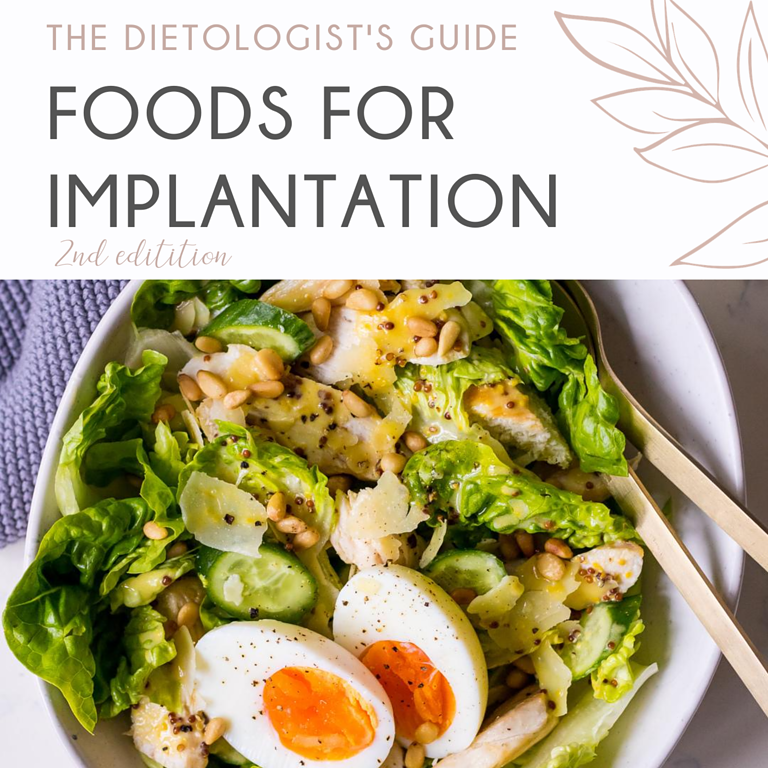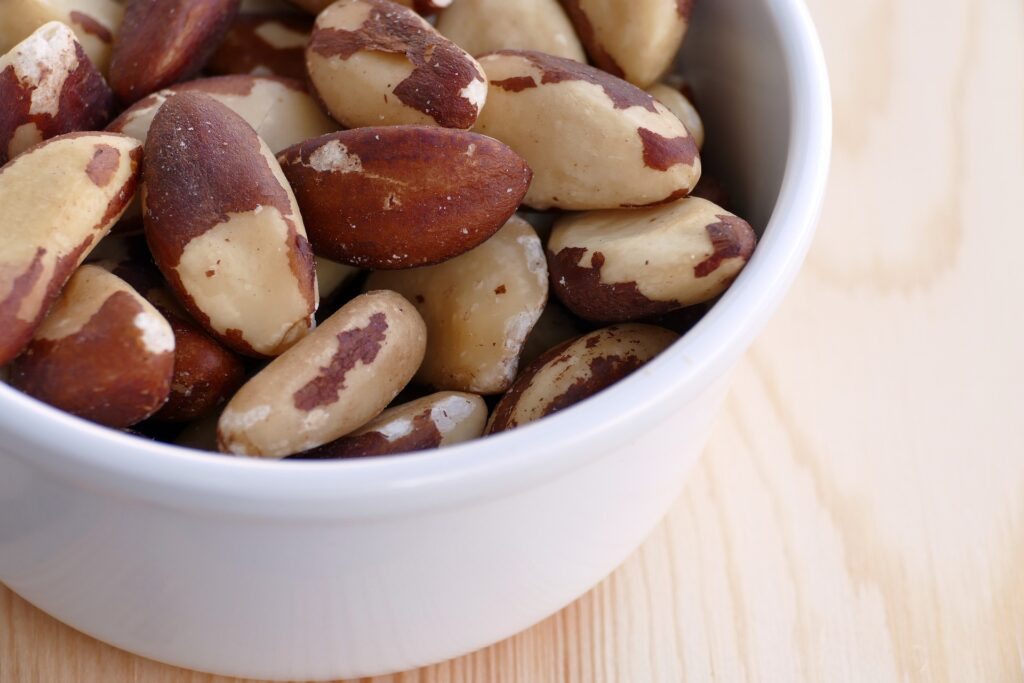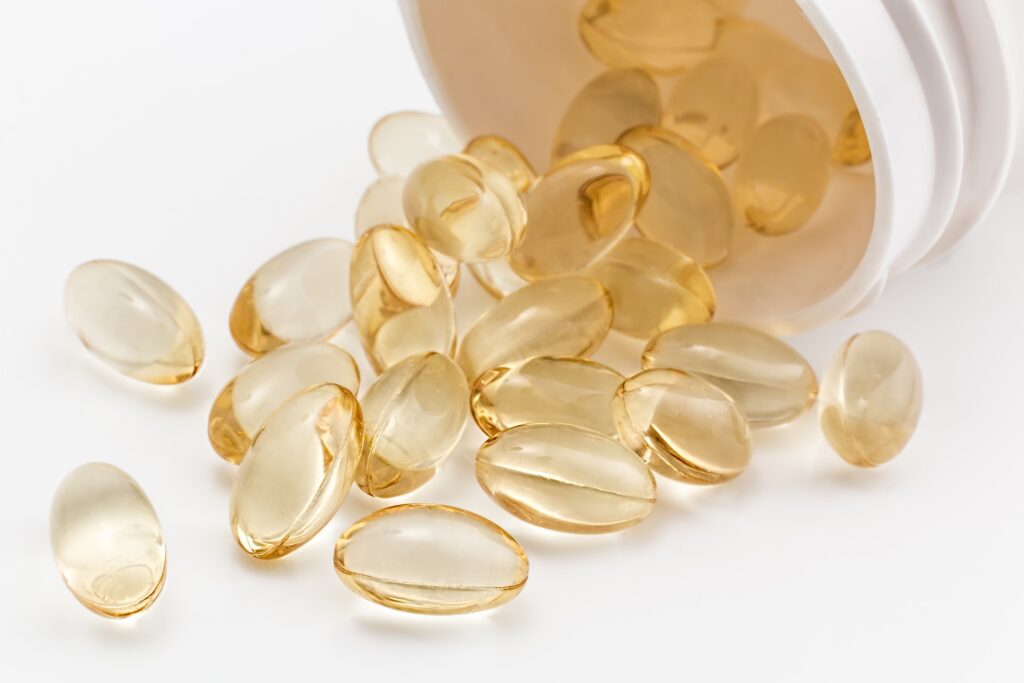Discover The Key Foods & Recipes for Embryo Implantation
with The Dietologist’s Food For Implantation eGuide


The two week wait can be an anxious time. Time seems to slow down and sometimes you begin to hyper focus on early pregnancy symptoms, and one question we get a lot is “what can I eat in the two week wait to help my chances of implantation?”
So, in this article, we are teaming up with fellow dietitian, Aleisha Deane APD to walk you through the key things to be focusing on during the two week wait in terms of your diet but also your lifestyle too!
Let’s get into it!
Implantation refers to when the embryo implants itself into the endometrial lining. To optimise the chances of implantation we want to support the growth of a thick and healthy endometrial lining and have low levels of inflammation. This will provide a nourishing environment that the embryo will want to live in!
Emerging research suggests that some key nutrients and foods may be able to assist with building up the lining to support implantation.

We are always told to eat our greens, and in this case it’s no surprise they are one of the key foods to include for the two week wait.
Rich in fertility-friendly folate which we already know plays a key role in preventing neural tube defects, and now has possible benefits to support implantation. In a study of women undergoing ART, higher folate intakes were associated with improved outcomes for both implantation and clinical pregnancy (Gaskins, A.J., et al 2014)
Often with fertility treatments or even without them when trying to conceive there is some anxiety and apprehension associated with this two week wait leading to poorer dietary choices. It can be easy to say good-bye to your good habits in the lead up, but now is not the time to stop those greens!
Our leafy greens are looking pretty good right now hey?
Examples of leafy green vegetables:

Not only do wholegrains provide important nutrients for fertility such as B vitamins (including folate), fibre, iron & iodine they may also support implantation. Research suggests that replacing processed, sugary carbs with low GI, micronutrient-rich wholegrains may improve endometrial lining with further benefits seen with a higher wholegrain intake.
Examples of wholegrains include:
One study found that women with higher intakes of wholegrains had a greater chance of implantation (Gaskins, A.J., et al 2016).
Benefits were seen with thicker uterine linings found in women with higher wholegrain intakes compared with women with lower intakes. Thicker lining = increased chance of implantation!
Try boosting your intake of wholegrains with some oats for breakfast, a wholegrain sandwich or wrap for lunch, whole grain crackers for a snack and some brown rice and quinoa with dinner. The goal is to reach 48 grams of wholegrains daily, read more about how to reach this on the Grains & Legumes Nutrition Council website.

A key food in the fertility space providing wonderful anti-inflammatory benefits! We know that low levels of inflammation make a nourishing environment for the embryo and a recent study of 100 women undergoing assisted reproductive therapy (ART) showed higher rates of implantation for women who had higher intakes of omega 3 fats in their diet vs women who consumed less (Chiu, Y-H., et al 2018).
The best way to boost your intake of omega 3’s is with fish and to aim for 2-3 serves per week. Sources of omega 3 (EPA/DHA marine sources) are found in oily fish and some seafood in varying amounts and fish oil supplements, if you’re vegetarian, vegan or have a fish allergy marine algae supplements may also be considered.

Don’t like fish? ALA (plant sources of omega-3 fats) also count but they aren’t converted as well by the body into EPA and DHA omega-3 fats, so we can’t rely on them alone.
Sources of ALA fats include:
A supplement may need to be considered to meet your individual needs, talk to your health professional or dietitian.
Snack time has never looked so good! Include a handful of nuts & seeds for a boost in healthy fats, zinc and vitamin E.
Make sure to include brazil nuts in your healthy handful as they are rich in zinc and selenium.

Zinc also plays a key role in making progesterone which helps to support and thicken the endometrial lining.
You should definitely continue to take your prenatal supplement which contains at a minimum folic acid/folate and iodine too. This is critical to take daily in the first 12 weeks of your pregnancy especially, and ideally 1-3 months before you conceive too to allow your body enough time to build up those critical nutrient stores.

We like to think of your prenatal supplement like insurance, providing a variety of key nutrients (folic acid/folate, iodine, B vitamins & zinc) on top of your dietary intake which can support fertility (including implantation) and the increased demands during pregnancy.
Managing stress when you’re anxiously awaiting a pregnancy test is way easier said than done! But here are a few strategies to try out if you’re feeling like your mental health (rather than your physical health) needs some TLC:

Keep on top of your fluids each day, getting enough water is really key and you may want to add in my beetroot juice combination featured in Foods for Implantation eGuide to help boost your fluids and your chances of implantation and pregnancy during the two week wait.
Be sure to follow your doctor’s advice about exercise recommendations during your two week wait.

However, gentle movement can help get the blood flowing to your reproductive organs and also to help you get your bowels working to remove waste products too. Many women also find this useful for their mental wellbeing too.
Want to snag all our favourite and science-backed tips to help support your body to increase your chances of implantation? Grab our Foods for Implantation eGuide complete with delicious recipes to keep you nourished (and busy in the kitchen) in your two week wait. It’s just $37 AUD/$25 USD and this delicious trail mix isn’t the only implantation friendly recipe inside!

Need help or support when it comes to your fertility nutrition? Get in touch with us at The Dietologist, fertility dietitians & nutritionists or Aleisha Deane APD, fellow fertility dietitian to discuss your individual requirements and how we can support you when it comes to starting or growing your family! Don’t forget to follow Aleisha on Instagram, you can find her at @aleishadeane.dietitian